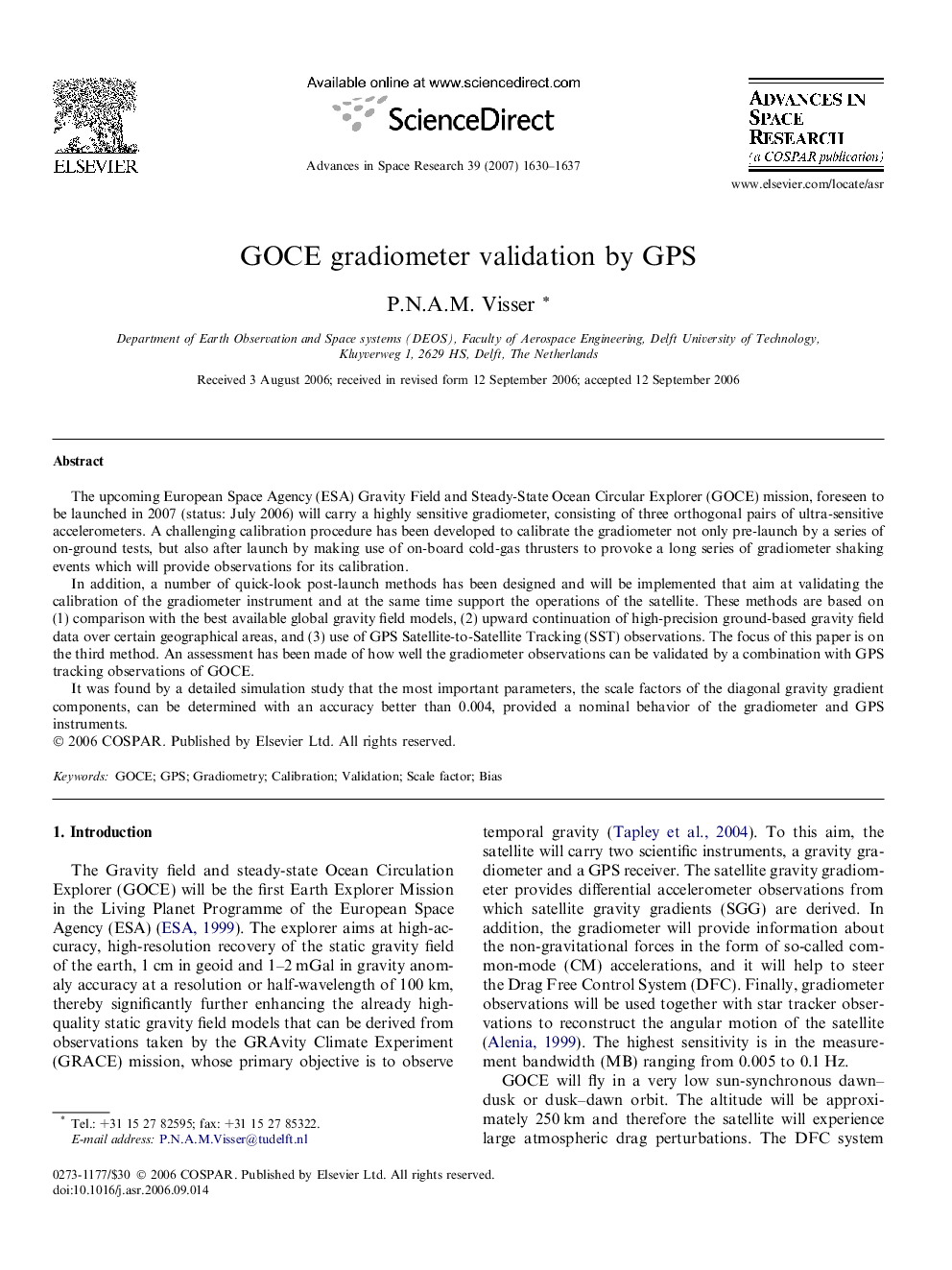| Article ID | Journal | Published Year | Pages | File Type |
|---|---|---|---|---|
| 1768906 | Advances in Space Research | 2007 | 8 Pages |
The upcoming European Space Agency (ESA) Gravity Field and Steady-State Ocean Circular Explorer (GOCE) mission, foreseen to be launched in 2007 (status: July 2006) will carry a highly sensitive gradiometer, consisting of three orthogonal pairs of ultra-sensitive accelerometers. A challenging calibration procedure has been developed to calibrate the gradiometer not only pre-launch by a series of on-ground tests, but also after launch by making use of on-board cold-gas thrusters to provoke a long series of gradiometer shaking events which will provide observations for its calibration.In addition, a number of quick-look post-launch methods has been designed and will be implemented that aim at validating the calibration of the gradiometer instrument and at the same time support the operations of the satellite. These methods are based on (1) comparison with the best available global gravity field models, (2) upward continuation of high-precision ground-based gravity field data over certain geographical areas, and (3) use of GPS Satellite-to-Satellite Tracking (SST) observations. The focus of this paper is on the third method. An assessment has been made of how well the gradiometer observations can be validated by a combination with GPS tracking observations of GOCE.It was found by a detailed simulation study that the most important parameters, the scale factors of the diagonal gravity gradient components, can be determined with an accuracy better than 0.004, provided a nominal behavior of the gradiometer and GPS instruments.
